Introduction
The Maestrazgo UNESCO Global Geopark (northeastern Teruel, Aragon, Spain) comprises 43 municipalities. In 2000, this area,together with territories in three other countries, prompted the creation of the European Geoparks Network (see details of the Geopark in Alcalá & Royo-Torres 2021, and references therein). While there are many municipalities of the Geopark where dinosaur bones have been recorded, dinosaur tracksites, which are significant for both research and promotion of education and geotourism, have been documented in just a few of them: Aliaga, Allepuz, Camarillas (found in 2013, unpublished), Castellote (Abenfigo and Ladruñán), Galve, and Miravete de la Sierra (Fig. 1). While none of the dinosaur bone sites have been given specific legal protection, seven dinosaur tracksites have been declared Assets of Cultural Interest by the Government of Aragon (Bien de Interés Cultural, Conjunto de Interés Cultural-Zona Paleontológica, Decree 20/2003, of January 28), which is the highest level of heritage protection afforded by Spanish legislation. They are located in: Castellote (Abenfigo), Galve (Ríos Bajos, Las Cerradicas, Los Corrales de Pelejón, El Cantalar, Barranco Luca 1 y 2) and Miravete de la Sierra (Miravete 1 and 2) (see Cobos et al. 2018).
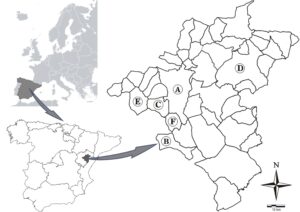
Figure 1. Situation map of Maestrazgo UNESCO Global Geopark. Code for municipalities mentioned in the text: A) Aliaga. B) Allepuz. C) Camarillas. D) Castellote (Abenfigo and Ladruñán). E) Galve. F) Miravete de la Sierra.
The most important tracksites of the Geopark are located in the Galve Sub-basin geological area (Maestrazgo basin, Iberian Range), occurring in lithostratigraphic units ranging from Upper Jurassic to lowest Cretaceous, where tracks of sauropods and ornithopods are abundant, although there are stegosaurians and theropods tracks too (Andrés et al. 2007; Cobos 2011; Castanera et al. 2011, 2013). In the Lower Cretaceous, ornithopod tracks are especially common in Barremian outcrops (Cobos et al. 2013; Herrero-Gascón & Pérez-Lorente 2013; Royo-Torres et al. 2013; Navarrete et al. 2014). There is also a small tracksite dated as Upper Cretaceous in the Morella Sub-basin (Meléndez et al. 2003; Mampel et al. 2010).
The stratigraphy of the areas where the main sites are located is described in Royo-Torres et al. (2014), Aurell et al. (2016, 2019) and Campos-Soto et al. (2019). Alcalá (2018) details a public network of paleontology installations within the Geopark (in Galve and Castellote) curated by the Dinópolis organization set up by the Government of Aragon. Dinópolis offers a network of facilities in the province of Teruel which serves as a paleontological museum, a paleontological research center, a territorial network of interpretation centers, and a set of attractions whose protagonists are dinosaurs.
This contribution focuses on two areas where tracksites have been prepared for public visits, because these feature the most noteworthy tracks. These areas have been converted into simple on-site facilities: Las Cerradicas, Los Corrales del Pelejón and Cerro de San Cristóbal in Galve, and the Miravete 1 in Miravete de la Sierra.
Las Cerradicas tracksite (Galve)
Ichnological Description
More than a hundred tracks have been documented at Las Cerradicas site (Fig.2). The first description by Pérez-Lorente et al. (1997) identified one of the four main trackways as belonging to an ornithopod. The other three, which share similar characteristics, were identified as possible ornithopod or theropod tracks (Cuenca-Bescós et al. 1997). The attribution of the three questionable trackways to theropod trackmakers by some researchers (Pérez-Lorente 2004, 2009; Canudo et al. 2005, 2008, 2010), led them to propose that theropod dinosaurs during the Tithonian-Berriasian transition displayed gregarious behavior (Pérez-Lorente 2004, 2009; Canudo et al. 2008, 2010; Castanera et al. 2012). However, the tridactyl pedes with associated manus tracks are more likely assignable to an ornithopod trackmaker (Carrano & Wilson, 2001), and therefore the interpretation that small theropods were gregarious at the time is unsupported. The original study of Pérez-Lorente et al. (1997) mapped manus tracks in the purported theropod trackway, and Alcalá (2006) discussed the criteria for attribution to theropods or ornithopods. Furthermore, these four trackways with tridactyl pedes from Las Cerradicas have been firmly attributed several times to quadrupedal ornithopod trackmakers (Royo-Torres & Cobos 2007; FCPTD 2009; Lockley 2009; Lockley et al. 2009; Cobos 2011; Castanera et al. 2013). The lack of a complete pes-manus pairs in some trackways from Las Cerradicas may be the consequence of the differential preservation of the ornithopod manus tracks, as detailed by Castanera et al. (2013).
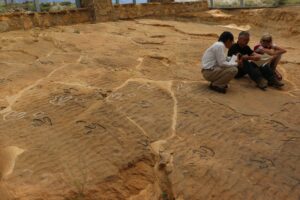
Figure 2. Las Cerradicas tracksite during a Global Geoparks Network revalidation mission in 2015. Notice that both ornithopod (white contours) and “theropod” (black contours) trackways include manus prints.
In addition, Castanera et al. (2011) described six parallel trackways (unearthed after a new excavation of this site) made by small sauropods, possibly small titanosauriforms, and attributed their parallelism to gregarious behavior. The most peculiar trait of the tracks is their small size, which could indicate that the trackmakers were either juveniles or dwarf sauropods.
Museographic and Conservation Activity
Las Cerradicas and Los Corrales del Pelejón (see below) are the only paleontological sites in the Geopark covered by a structure that protects them from weathering and other threats (such as the passage of livestock, visitors, etc.). In both cases, the infrastructure was completed to protect the paleoichnological sites in situ, unlike at other sites where total or partial excavation and removal of the fossil remains is possible.
Initial conservation at Las Cerradicas took place during the 1990s and early 21st century. Work was carried out to divert water and stabilize the tracked area; in 2005 cleaning, preparation, stabilization, and the uncovering of new tracks, were carried out by specialized technicians of the School of Paleontological Restoration of the Government of Aragon. A wall was also built to protect the surface from run-off water. Later the excavation of a new part of the site was undertaken and coordinated by paleontologists from the University of Zaragoza to evaluate the impact of foundations for the planned covering, which was constructed in 2008 (Alcalá et al. 2010). This structure was planned to reduce insolation and humidity (rain and snow are common in Galve) and also to provide natural lighting for the tracks. The roofing installed at Las Cerradicas is not fixed to any point within the area with tracks. The roof is made of rigid, translucent materials, with taut canvases on its sides that feature interpretation texts and graphics. A ladder provides access to a raised platform from which the tracks can be observed in full (Fig.3). In addition, a disused road to Galve was converted into a parking area for visitors.
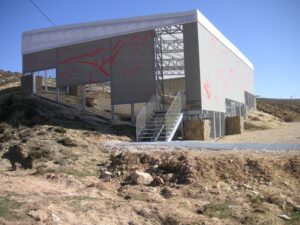
Figure 3. Structure that protects the Las Cerradicas tracksite near the village of Galve.
Las Cerradicas was one of 11 tracksites selected for the Dinosaur Ichnites of the Iberian Peninsula transnational candidacy for the UNESCO World Heritage List (WHL), under the motto Dinosaurs Walking in a Drifting World (FCPTD 2009), and presented jointly by the governments of Spain and Portugal. After evaluation during the 34th session of the World Heritage Committee in Brasilia in 2010, decision 34COM 8B.7 of the WHC deferred the inscription in the WHL and requested that the applicants justify the Outstanding Universal Value (OUV) of a property based on dinosaur ichnites (Alcalá 2012; Cobos et al. 2018). However, after many changes in the political representatives for culture in the six Spanish autonomous communities involved and also in the Spanish and Portuguese state administrations, the decision was taken to abandon the proposal and remove the property from the Spanish Tentative List (resolution passed at the meeting of Consejo de Patrimonio Histórico held in Córdoba in 2016). Portugal also withdrew the Icnitos de Dinossáurios da Península Ibérica property from its Tentative List in 2016 (Alcalá et al. 2018).
In recent years the site has hosted numerous educational, training and geotourism events: guided visits for general public, guided visits for experts, for example, during the 10th Mesozoic Terrestrial Ecosystems (Teruel 2009) and the XVI Symposium on Geology Teaching (Teruel 2010), activities to celebrate European Geoparks Week, several paleontological meetings at Galve, and fieldtrips for a course on Paleontology & Development (Teruel Summer University of Zaragoza), among others.
Los Corrales del Pelejón Tracksite (Galve)
Ichnological Description
Los Corrales del Pelejón was the first dinosaur tracksite to be studied in Aragon (Casanovas-Cladellas et al. 1983-1984). These authors described the tracks and identified them as belonging to theropod dinosaurs. Some years later, after cleaning the site, 35 new tracks with similar characteristics were discovered, largely distributed across seven trackways showing different directions (Cuenca et al. 1993). Track morphologies and sizes are different but all of them are tridactyl, most have an elongated central digit, and tracks are commonly longer than they are wide. In some samples, it is possible to distinguish sharp claw marks and digits with numerous pads. There are also tridactyl tracks without nail marks, and with length/width ratio close to one. These trackmakers would have been medium-sized ornithopods. Finally, there are four large, rounded, depressions in the center of the site (Fig. 4), but they lack diagnostic characters and maybe undertracks (Andrés et al. 2007).
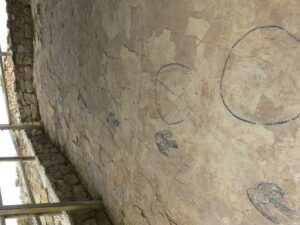
Figure 4. Detail of the track layer in Los Corrales del Pelejón tracksite.
In terms of geological age, this site was traditionally included in the El Castellar Formation (Hauterivian-Barremian, e.g.Ruiz-Omeñaca et al. 2004), but Luque et al. (2006-2007) placed it in the underlying Villar del Arzobispo Formation (dated around the Jurassic-Cretaceous transition in the Galve area, Royo-Torres et al. 2014; Aurell et al. 2016).
Museographic and Conservation Activity
The standout development project on this site took place in 1993 with the aim of providing protection and a clear view of the in situ ichnites (Cuenca et al. 1993). Although the final result has been generally satisfactory (Fig. 5), more suitable materials and design would have offered more efficient protection and less maintenance requirements for the cover and the ichnological stratum.
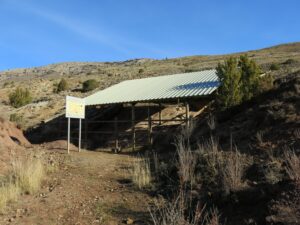
Figure 5. The first tangible protection of a paleontological site built in Maestrazgo Geopark (Los Corrales del Pelejón).
San Cristóbal 3 Tracksite (Galve)
Ichnological Description
The San Cristóbal 3 tracksite was located in the Camarillas Formation (lower Barremian), in the municipality of Galve. Before its removal by mining activity, a paleontological and ichnological data recovery project was carried out in 2011 (Royo-Torres et al. 2013). Six dinosaur tracks were originally described by Herrero-Gascón & Pérez-Lorente (2009) over a small surface area, but subsequent work in 2011 identified 43 ichnites in a 100 m2 area (Fig. 6). During the investigation, apparently circular tracks (length/width ratio close to one) were documented, but identifiable trackways could not be identified, and the arrangement suggested simple dinoturbation. After careful cleaning, three digit marks and a rounded heel were observed inside the circular perimeter of at least four tracks, which allowed reinterpretation of the trackmakers from sauropods (Herrero-Gascón & Pérez-Lorente 2009) to probable ornithopods (Royo-Torres et al. 2013).
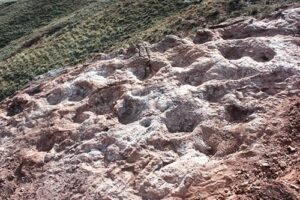
Figure 6. San Cristóbal 3 tracksite during its study.
Museographic and Conservation Activity
The main objective of paleontological work at this site was to safeguard the scientific information and remove the most representative ichnites to make way for mining activity. The work was organized by the Fundación Conjunto Paleontológico de Teruel-Dinópolis under the supervision of the General Directorate of Cultural Heritage of the Government of Aragon, and was funded by the mining company Watts Blake Bearne España, S.A. Three of the original tracks were extracted, a detailed 3-dimensional scan of the site was carried out, and a full-sized polyester resin replica of the most relevant part of the tracksite was made. This replica is currently on display at the Dinópolis satellite center in Galve (Fig.7).
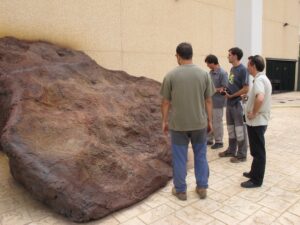
Figure 7. Replica of tracks from San Cristóbal 3 exhibited in the satellite of Dinópolis in Galve, visited during the Global Geoparks Network revalidation mission carried out in 2011.
Miravete Tracksite (Miravete de la Sierra)
Ichnological Description
The landscape surrounding the very small village of Miravete de la Sierra (31 inhabitants) is influenced by the structure of an anticline affecting Upper Jurassic-Lower Cretaceous marine and continental sediments, deposited in the Galve Sub-basin of the Maestrazgo Basin. There are two dinosaur tracksites in the vicinity of Miravete village: Miravete 1 and Miravete 2. The tracks were attributed to sauropod and theropod dinosaurs (Pérez-Lorente, 2004), and the limestone layers which include them have been ascribed to the Tithonian-Berriasian Villar del Arzobispo Formation (Pérez-Lorente & Romero-Molina 2001; Espílez & Mampel 2008; Aurell et al. 2016). As a result of geoconservation activity (Alcalá et al. 2013), new dinosaur tracks were documented. In the lower layer of Miravete 1 (Fig. 8), the number of identified tracks increased from 57 to 66. All these tracks are oval-shaped or rounded. Additionally, five new tracks were identified in the upper layer of Miravete 1, increasing the count from 10 to 15.
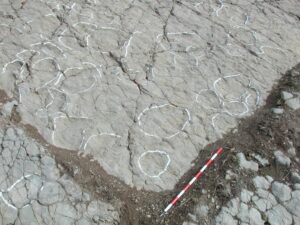
Figure 8. Detail of some dinosaur tracks in the lower layer of Miravete 1.
Museographic and Conservation Activity
The Miravete 1 tracksite was partially prepared for visitors as part of the technical preparation for students of the School of Paleontological Restoration, a two-year postgraduate training, of the Government of Aragon in 2013. The specific actions undertaken were widening of the exposed area, removal of plants (with organic herbicide products when necessary), cleaning fissures and sealing cracks (with epoxy resins), detection and recovery of ex situ fragments, joining of detached fragments, and consolidation. In addition, a broken theropod track from Miravete 2 was recovered, restored and reintegrated. This track is currently displayed in the main Dinópolis exhibition center as a sample of what visitors can see if they choose to visit the Geopark (Fig. 9).
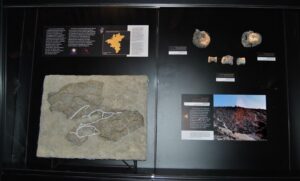
Figure 9. The recovered track of a theropod from Miravete 2 on display in the Dinópolis main exhibition in Teruel city.
It is worth noting that in addition to guided visits and other educational and geotourism activities at the tracksite, in August 2013 a twinning agreement was signed in Miravete de la Sierra by representatives of the Maestrazgo UNESCO Global Geopark and the Longhushan UNESCO Global Geopark (Jiangxi, China).
Geolodía Educational Event at Abenfigo Tracksite (Castellote)
Other scientific dissemination events have also been carried out in the dinosaur tracksites of the Maestrazgo Geopark. The celebration of Geolodía (the Spanish Day of Geology) is a highlight event. Geolodía is currently the most popular geological activity in Spain, as it takes place over one weekend of the year in all provinces of the country. During the event, specialists share the interpretation of some remarkable geological features with members of the public (Alcalá & Simón 2018; Cobos et al. 2020). The national celebration has been coordinated by the Sociedad Geológica de España (Geological Society of Spain) since 2010, and features the involvement of more than 500 organizers and volunteers. Maestrazgo Geopark was the stimulus for the first Geolodía event, held in the Aliaga Geological Park in 2005.
Geolodía-Teruel was celebrated at the Abenfigo tracksite on April 25, 2010 (Fig. 10), with the topic “Tras las huellas de los dinosaurios” (“Following the dinosaur tracks”) (Mampel et al. 2010). This outcrop is the only one with dinosaur ichnites from the Late Cretaceous (Meléndez et al. 2003) so far identified in the province of Teruel. It is characterized by the presence of tracks of about 30 cm in length produced by theropod dinosaurs that walked on a soft substrate covered by algal mats (Andrés et al. 2007).
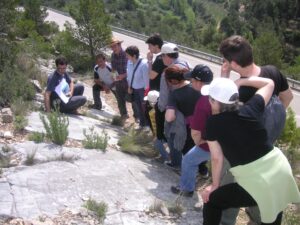
Figure 10. A group of participants at the celebrated in 2010 at the Abenfigo tracksite (Castellote).
Involvement of the Local Community
The province of Teruel has suffered a continuous loss of population. In 1910, it had 265,908 inhabitants, whereas the latest available census from the National Institute of Statistics indicates only 134,176 (2020). The territory of the Maestrazgo Geopark has an average population density of fewer than 6 inhabitants per km2, and many villages have populations of only a few dozen people. Furthermore, this population is in general elderly, with an average age much higher than for Spain as a whole. Despite this, interest in the conservation and dissemination of local paleontological resources is very strong in some localities.
Galve (162 inhabitants) stands out, where, thanks to the pioneering efforts of its resident Mr. José María Herrero (1925–2012) and his family, local people were instrumental in the discovery of the first dinosaur tracks in 1981. In the mid-1990s the first organized visits began, which were guided by members of his family, until in 2001 they created a small company, called “Guías de Galve” (Guides of Galve), for this purpose. Thus, in this municipality, certain tasks of conservation and dissemination of paleontological heritage in general, and ichnological heritage in particular, have been carried out by the local residents themselves, who founded the Cultural Association “Dinosaurio”, by the council itself (Instituto de Estudios Turolenses, 2009), and by institutions such as the Government of Aragon and its Dinópolis Foundation. The involvement of the local population to promote its paleontological heritage has made Galve one of the key municipalities in the creation of the Maestrazgo Cultural Park, which is the foundation for the creation of the UNESCO Global Geopark. It also led to the creation of a local museum and a Dinópolis “satellite” museum.
Despite the senior age profile of the population of the Maestrazgo Geopark, the inhabitants have actively participated in the events organized by the institutions that operate in the Geopark, such as informative talks about geoconservation given by post-graduate experts of the School of Paleontological Restoration (Government of Aragon), and on paleontological heritage by experts of Dinópolis Foundation in Miravete de la Sierra (31 inhabitants), or the celebration of Geolodía (the Day of Geology) in Abenfigo (45 inhabitants). This increase in paleontological knowledge encourages the residents to value their heritage, contribute respectfully to its conservation and help promote it among visitors.
Conclusion
While new dinosaur ichnotaxa have not yet been described from the Geopark, some tracksites are important for the scientific community and development of the territory. This is because they have been prepared for visits as an educational and geotourism resource. Thus, visitors can enjoy the open-air paleontological heritage of the Geopark and learn about its dinosaur record in situ at the same time. In addition, given the especially delicate and outdoor nature of this heritage, various campaigns have been carried out focused on preventive restoration, conservation, and legal protection.
Acknowledgments
The authors acknowledge Prof. Dan Grigorescu’s gracious invitation to participate in this special issue. The Departamento de Educación, Cultura y Deporte (Gobierno de Aragón), Research Group E04_20R FOCONTUR financed by the Departamento de Ciencia, Universidad y Sociedad del Conocimiento (Gobierno de Aragón) and FEDER funds “Construyendo Europa desde Aragón”, Instituto Aragonés de Fomento (IAF), Dinópolis. Research project PGC2018-094034-B-C22 (MCIU/AEI/FEDER, UE) and Unidad de Paleontología de Dinosaurios de Teruel (Ministerio de Ciencia e Innovación). We acknowledge the improvement to the text made by Ciaran Rowe and the helpful suggestions made by two anonymous reviewers.
Conflict of Interest
The authors declare that they have no conflicts of interest.
References
Alcalá L (2006). Los yacimientos turolenses de icnitas y el Conjunto Paleontológico Dinópolis. In F. Torcida Fernández-Baldor (Ed.), Actas simposio internacional Huellas que perduran. Icnitas de dinosaurios: patrimonio y recurso (pp. 265-286). Valladolid: Fundación del Patrimonio Histórico de Castilla y León.
Alcalá L (2018). Dinópolis, halfway between amusement park and science museum: how to develop geotourism in aregion undergoing depopulation. International Journal of Geoheritage and Parks. 6:40-71.
Alcalá L (2012) The IDPI (Icnitas de Dinosaurios de la Península Ibérica) WHL candidacy in perspective. In Huh M, Kim KJ & Park JY (Ed.), The 11th Symposium on Mesozoic Terrestrial Ecosystems (pp. 255-258). Gwanju: Chonnam National University.
Alcalá L& Royo-Torres R (2021). Dinosaur bones from Maestrazgo UNESCO Global Geopark (Teruel, Spain). Geoconservation Research, this volume.
Alcalá L&Simón JL (2018). Geolodía en Teruel. In L. Alcalá, J.P. Calvo, J.L Simón, Ed.), Geología de Teruel (pp. 173-175). Teruel: Instituto de Estudios Turolenses.
Alcalá L, Cobos A & Royo-Torres R (2018). Dinosaurios de la Península Ibérica. Revista PH, Instituto Andaluz del Patrimonio Histórico. 94:116-153.
Alcalá L, Cobos A, Mampel L, Luque L, Royo-Torres R & Andrés JA (2010). Surveying dinosaur sites: Las Cerradicas (Galve, Teruel, Spain). In Lamolda MA et al (Ed.) Geoevents, Geological Heritage, and the Role of the IGCP (pp. 197-199). Caravaca de la Cruz: IGCP.
Alcalá L, Santos-Cubedo A, Mampel L, Ferrer R, Espílez E & Hernández A (2013). Building up a dinosaur identity in Miravete de la Sierra (Maestrazgo Cultural European & Global Geopark, Teruel, Spain). In Aloia A, Calcaterra D, Cuomo, A de Vita A, Guida D (Ed.), Proceedings of the 12th European Geoparks Conference (pp. 3-6). Vallo della Lucania: National Park of Cilento, Vallo di Diano e Alburni.
Andrés JA, Alcalá L, Barco JL, Canudo JI, Cobos A & García Pimienta JC (2007).Un paseo con losdinosaurios por Aragón (Yacimientos de icnitas de dinosaurio). Zaragoza: Consejo de Protección de la Naturaleza.
Aurell M, Bádenas B, Gasca J.M, Canudo JI, Liesa CL, Soria AR, Moreno-Azanza M & Najes L (2016). Stratigraphy and evolution of the Galve subbasin (Spain) in the middle Tithonian-early Barremian: Implications for the setting and age of some dinosaur fossil sites. Cretaceous Research. 65:138-162.
Aurell M, Bádenas B, Canudo JI, Castanera D, García-Penas A, Gasca JM, Martín-Closas A, Moliner L, Moreno-Azanza M, Rosales I, Santas L, Sequero C & Val J (2019).Kimmeridgian–Berriasian stratigraphy and sedimentary evolution of the central Iberian Rift System (NE Spain). Cretaceous Research. 103:104153.
Campos-Soto S, Benito MI, Cobos A, Caus E, Quijada IE, Suarez-Gonzalez P, Mas R, Royo-Torres R & Alcalá L (2019). Revisiting the age and palaeoenvironments of the Upper Jurassic-Lower Cretaceous? dinosaur-bearing sedimentary record of eastern Spain: implications for Iberian palaeogeography. Journal of Iberian Geology. 45:471-510.
Canudo JI, Aurell M, Barco JL, Cuenca-Bescós G & Ruiz-Omeñaca JI (2005). Los dinosaurios de la Formación Villar del Arzobispo (Titónico medio-Berriasiense inferior) en Galve (Teruel). Geogaceta. 38:39-42.
Canudo JI, Pérez-Lorente F, Badiola A, Barco JL, Cruzado-Caballero P, Díaz-Martínez I, Gasca JM, Gómez-Fernández D, Moreno-Azanza M & Herrero-Gascón J (2008). Evidencia de gregarismo en pequeños dinosaurios saurópodos del Titónico-Berriasiense (Formación Villar del Arzobispo, Galve, Teruel). In Ruiz-Omeñaca JI, Piñuela L, García-Ramos JC (Ed.) XXIV Jornadas de la Sociedad Española de Paleontología (pp. 23-24). Colunga: Museo del Jurásico de Asturias.
Canudo JI, Badiola A, Barco JL, Castanera D, Cruzado-Caballero P, Díaz-Martínez I, Gasca JM, Moreno-Azanza M, Puértolas E, Rabal R, Ramón D, Ruiz-Omeñaca JI, Sauqué V & Cuenca-Bescós G (2010). 20 años ayudando a diseñar museos por Aragón. In Gámez Vintaned JA (Ed.), XI Jornadas Aragonesas de Paleontología. La paleontología en los museos (pp. 111-134). Zaragoza: Institución Fernando el Católico.
Carrano MT & Wilson JA (2001). Taxon distributions and the tetrapod track record. Paleobiology. 27:564-582.
Casanovas-Cladellas L, Santafé-Llopis JV & Sanz JL (1983-1984). Las Icnitas de “Los Corrales del Pelejón” en el Cretácico inferior de Galve (Teruel-España). Paleontologia i Evolució. 18:173-176.
Castanera D, Barco JL, Díaz-Martínez I, Herrero Gascón J, Pérez-Lorente F & Canudo JI (2011). New evidence of a herd of titanosauriform sauropods from the lower Berriasian of the Iberian range (Spain). Palaeogeography, Palaeoclimatology, Palaeoecology. 310:227-237.
Castanera D, Barco JL, Díaz-Martínez I, Herrero J, Pérez-Lorente F & Canudo JI (2012). Juvenile or dwarf sauropods? The case of the titanosauriform herd from Las Cerradicas tracksite (Teruel, Spain). In Richter A, Reich M (Ed.), Dinosaur Tracks 2011. Abstract Volume and Field Guide to Excursions (p. 19). Göttingen: Universitätsverlag Göttingen.
Castanera D, Vila B, Razzolini NL, Falkingham PL, Canudo JI, Manning PL & Galobart A (2013). Manus track preservation bias as a key factor for assessing trackmaker identity and quadrupedalism in basal ornithopods. PLOS One, 8,1, e54177, doi:10.1371/journal.pone.0054177
Cobos A (2011). Los dinosaurios de Teruel como recurso para el desarrollo territorial. Ph Dissertation. Universidad del País Vasco.
Cobos A, Gascó F, Royo-Torres R & Alcalá L (2013). "Dinoichnofacies" barremienses de Teruel (España). In Álvarez-Vázquez C, López-Rodríguez I (Ed.), Libro de Resúmenes. XXIX Jornadas de la Sociedad Española de Paleontología (pp. 65 - 66). Córdoba: Real Jardín Botánico de Córdoba.
Cobos A, Alcalá L, Rodríguez-Tovar F & Mampel L (2018). Ichnological analysis of a good of cultural interest: the Site of El Hoyo (El Castellar, Aragón, Spain). Geoheritage. 10:415-425.
Cobos A, Alcalá L & Royo-Torres R (2020). The dinosaur route in El Castellar (Teruel, Spain): palaeontology as a factor of territorial development and scientific education in a sparsely inhabited area. Geoheritage. 12:52.
Cuenca-Bescós G, Canudo JI & Ruiz-Omeñaca JI (1997). Dinosaurios del tránsito Jurásico-Cretácico en Aragón. In Gámez-Vintaned JA, Liñan E (Ed.), V Jornadas Aragonesas de Paleontología Vida y Ambientes del Jurásico (pp. 193-221). Zaragoza: Institución Fernando El Católico:.
Cuenca-Bescós G, Ezquerra R, Pérez F & Soria AR (1993). Las huellas de dinosaurios (icnitas) de Los Corrales del Pelejón. Zaragoza: Departamento de Cultura y Educación, Gobierno de Aragón.
Espílez E & Mampel L (2008), Catálogo de patrimonio cultural paleontológico del término municipal de Miravete de la Sierra (Teruel). Zaragoza: Dirección General de Patrimonio Cultural, Gobierno de Aragón.
FCPTD (Fundación Conjunto Paleontológico de Teruel-Dinópolis), coord. (2009). Dinosaur Ichnites of the Iberian Peninsula, World Heritage Candidacy. Teruel: Ministerio de Cultura de España y Ministerio do Ambiente, do Ordenamento do Territorio e do Desenvolvimiento Regional de Portugal.
Herrero-Gascón J & Pérez-Lorente F (2009). Aportaciones de un nuevo yacimiento de icnitas saurópodas de la Formación Camarillas (Barremiense inferior, Galve, Teruel). Geogaceta. 46:67-70.
Herrero-Gascón J & Pérez-Lorente F (2013). Nuevas aportaciones icnológicas de Galve (Teruel, España). Grandes huellas ornitópodas en el yacimiento Santa Bárbara. Geogaceta. 53:21-24.
Instituto de Estudios Turolenses (2009). II Jornadas Paleontológicas de Galve. 50 años del descubrimiento de Aragosaurus y 20 años de su definición. Teruel: Instituto de Estudios Turolenses.
Lockley MG (2009). Some comparisons between dinosaur-dominated footprint assemblages in North America and Europe. In Huerta Hurtado P, Torcida Fernández-Baldor F (Ed.), Actas de las IV Jornadas Internacionales sobre Paleontología de Dinosaurios y su Entorno (pp. 121-138). Salas de los Infantes: Colectivo Arqueológico y Paleontológico de Salas.
Lockley MG, McCrea RT & Matsukawa M (2009). Ichnological evidence for small quadrupedal ornithischians from the basal Cretaceous of SE Asia and North America: implications for a global radiation. In Buffetaut E, Cuny G, Le Loeuff J, Suteethorn V (Ed.), Late Palaeozoic and Mesozoic Ecosystems in SE Asia (pp. 255-269). London: The Geological Society, Special Publications..
Luque L, Espilez E, Cobos A, Alcalá L, Royo-Torres R, Aberasturi A, Mampel L & González A (2006-2007). Iguanodóntidos y otros vertebrados cretácicos de la Sierra (Teruel). Teruel. 91:57-87.
Mampel L, Hernández A, Alcalá L, Gascó F, Cerón C, Espílez E, Luque L & Soler A (2010). Geolodía 10. Tras las huellas de los dinosaurios. Abenfigo (Castellote). 25 de abril. Teruel: Instituto de Estudios Turolenses.
Meléndez A, Ezquerra R, Zurita E & Pérez-Lorente F (2003). El yacimiento de huellas de Dinosaurios de Abenfigo (Teruel, España). In Pérez Lorente F, Romero-Molina MM, Rivas P (Ed.), Dinosaurios y otros reptiles mesozoicos en España (Vol 62, pp. 137-146). Logroño: Instituto de Estudios Riojanos, Ciencias de la Tierra
Pérez-Lorente F (2004). Las icnitas de dinosaurios de Teruel. ¡Fundamental! 02:13-32.
Pérez-Lorente F (2009).Las huellas de Galve. In II Jornadas Paleontológicas de Galve. 50 años del descubrimiento del Aragosaurus y 20 años de su definición (pp. 85-114). Teruel: Instituto de Estudios Turolenses.
Pérez-Lorente F & Romero-Molina MM (2001). Nuevas icnitas de dinosaurios terópodos y saurópodos en Galve y Miravete de la Sierra (Teruel. España). Geogaceta. 30:115-118.
Pérez-Lorente F, Cuenca-Bescós G, Aurell M, Canudo JI, Soria AR & Ruiz-Omeñaca JI (1997). Las Cerradicas tracksite (Berriasian, Galve, Spain): Growing evidence for quadrupedal ornithopods. Ichnos. 5:109-120.
Royo-Torres R & Cobos A(2007). En ruta con los dinosaurios de Teruel. ¡Fundamental!11:65-76.
Royo-Torres R, Mampel L & Alcalá L (2013). Icnitas de dinosaurio del yacimiento San Cristóbal 3 de la Formación Camarillas en Galve (Teruel, España). Geogaceta. 53:5-8.
Royo-Torres R, Upchurch P, Mannion P.D, Mas R, Cobos A, Gascó F, Alcalá L & Sanz JL (2014). The anatomy, phylogenetic relationships, and stratigraphic position of the Tithonian–Berriasian Spanish sauropod dinosaur Aragosaurus ischiaticus. Zoological Journal of the Linnean Society. 171:623-655.
Ruiz-Omeñaca JI, Canudo JI, Aurell M, Bádenas B, Barco JL, Cuenca-Bescós G & Ipas J (2004). Estado de las investigaciones sobre los vertebrados de Jurásico Superior y Cretácico Inferior de Galve (Teruel). Estudios Geológicos. 60:179-202.
